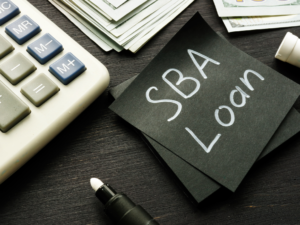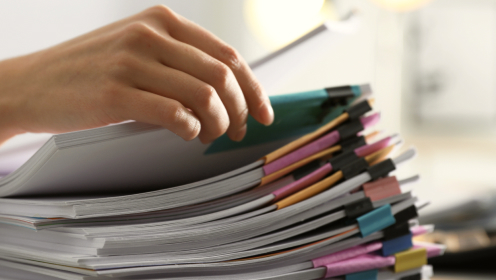In the wake of the COVID-19 pandemic, restrictions on gathering and other crowd control measures had a huge impact on restaurant owners. As a result, the U.S. Congress introduced legislation called the Restaurant Revitalization Fund (RRF) to help restaurants get back on their feet.
The unfortunate outcome however was that the demand for the funds was far greater than the supply. According to the SBA, they received more than 278,000 applications by June 30th, 2021, seeking more than $72.2 billion in funding. The SBA closed the program and stopped accepting applications on July 2nd, 2021. Less than 10 days after the SBA launched the RRF Portal, the applications submitted equated to more than twice the amount of funds available.
As a restaurant owner, you’ve most definitely heard about the varying RRF updates throughout the last year, how they could possibly impact your establishment, and more. With so many questions surrounding the RRF, we created this resource and guide to provide answers. Keep reading to learn more about RRF grant updates, eligibility, RRF forgiveness, and more.

Overview of the Restaurant Revitalization Fund
The RRF is actually part of the American Rescue Plan Act (ARPA), which was established in March 2021. A particular section of the legislation, Section 5003, laid the foundation for the Restaurant Revitalization Fund.
Initially, nearly $29 billion was appropriated to award eligible restaurants and other establishments to help their businesses in the wake of the pandemic. Until these funds were used up, they were available for eligible entrepreneurs, establishments, and corporations.
All of the funds had to be used for valid cases and claims up to March 11, 2023. This deadline had many restaurants wondering who is eligible, when to expect additional RRF updates to the legislation, if any additional RRF forgiveness has been granted, and which anti-fraud mechanisms were put in place to determine which claims are legitimate.
Current RRF updates
AUGUST 2022:
The SBA is set to award an added $180 million in unspent funds allocated for the Restaurant Revitalization Fund (RRF) back in 2021. This is not an infusion of funds into the RRF currently; in fact, a new law was introduced and passed by the House of Representatives to replenish the RRF with more than $40 billion, but it did not pass the Senate (See June 2022 update below).
It is not clear how, when, or to whom these RRF grants will be issued, so do not throw away any correspondence from the SBA because you may be one of the lucky stores to receive an extremely late RRF grant!
WATCH THE QUICK UPDATE VIDEO BELOW!
JUNE 2022:
In 2022, many RRF updates are in the works. The U.S. House and Senate passed a bill, S.4008, which would’ve added $40 billion to the plan – a significant increase over the approximate $29 billion originally proposed in the RRF. However, in May, the Senate didn’t pass the proposed increase, which was viewed by many as a setback.
How many restaurants originally benefited from the Restaurant Revitalization Fund?
According to the SBA, the RRF provided $28.6 billion to more than 100,000 restaurants, bars, and other businesses that provide on-site food and drink.
What are eligible expenses and restrictions that RRF grant recipients should know about?
Eligible business expenses include:
-
- Business payroll costs, including health insurance
- Payments on any business mortgage obligation (both principal and interest; note: this does not include any prepayment of principal on a mortgage obligation)
- Business rent payments (note: this does not include prepayment of rent)
- Business debt service (both principal and interest; note: this does not include any prepayment of principal or interest)
- Business utility payments, maintenance expenses
- Construction of outdoor seating
- Business supplies (including protective equipment and cleaning materials)
- Covered supplier costs, same definition as under PPP Forgiveness nonpayroll expenses—food purchases
- Day to Day Business operating expenses
- A few examples include:
- Legal expenses, marketing expenses, insurance expenses, business licenses, shipping fees, equipment (new hood or a new grill, new fryers, etc.)
- A few examples include:
Restrictions are as follows:
-
- Recipients cannot claim wages paid with RRF grant money as wages for purposes of the ERTC or PPP forgiveness.
- Recipients cannot claim other expenses paid with RRF grant money as nonpayroll costs for purposes of PPP forgiveness.
The SBA considers this “double-dipping.”
What is the timeframe for using the RRF grant money?
The Restaurant Revitalization Fund covered period begins on February 15, 2020 and ends on March 11, 2023.
The recipient has until March 11th of 2023 to use the RRF grant unless the business has permanently closed. If the business permanently closes, the covered period will end when the business permanently closes; or, on March 11, 2023 – whichever occurs sooner.
Past-due expenses qualify as RRF expenses. However, for expensesses incurred on February 15, 2020 or after, be careful not to use the following:
-
- Payroll costs claimed as ERTC eligible wages
- Forgivable payroll expenses on the PPP forgiveness application
- Nonpayroll expenses claimed on the PPP Forgiveness application
Would a grant recipient ever have to pay back any of the funds?
So long as funds are utilized for eligible applications no later than March 11, 2023, there is no requirement for recipients to repay the funding.
Recipients that are unable to use all of the funds received on eligible expenses by the end of the covered period must return any unused funds to the Treasury.
Are there any reporting requirements for RRF grant recipients?
 No later than December 31, 2021, all recipients are required to report to the SBA how much of their RRF grant has been used against each eligible use category. If the recipient fully expends their funds prior to December 31, 2021, they will be asked to certify that proceeds have been used on eligible expenses. A requirement for annual reporting submissions applies to any applicant who doesn’t fully expend RRF grant funds before December 31, 2021. This will remain until they fully expend the grant funding or the covered period expires.
No later than December 31, 2021, all recipients are required to report to the SBA how much of their RRF grant has been used against each eligible use category. If the recipient fully expends their funds prior to December 31, 2021, they will be asked to certify that proceeds have been used on eligible expenses. A requirement for annual reporting submissions applies to any applicant who doesn’t fully expend RRF grant funds before December 31, 2021. This will remain until they fully expend the grant funding or the covered period expires.
Is the grant money taxable and are the expenses deductible?
According to the American Rescue Plan Act of 2021 (ARPA), the amounts received from the SBA in the form of a Restaurant Revitalization Grant shall not be included in gross income (non-taxable); additionally, the expenses incurred are deductible.
Helpful links:
U.S. Small Business Administration RRF Award Portal
Restaurant Revitalization Funding Program
LISTEN TO THE QUICK UPDATE PODCAST BELOW!







